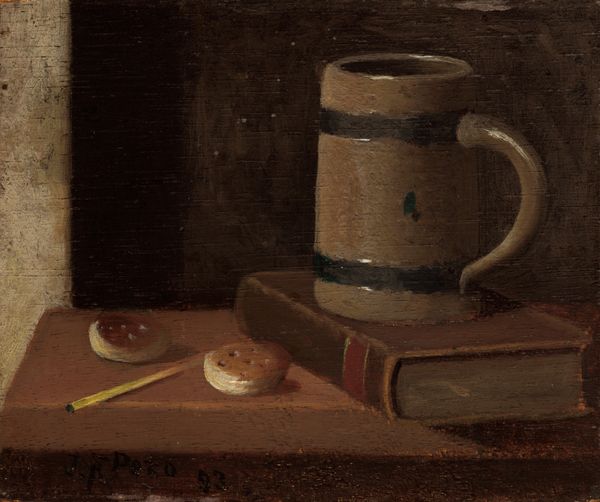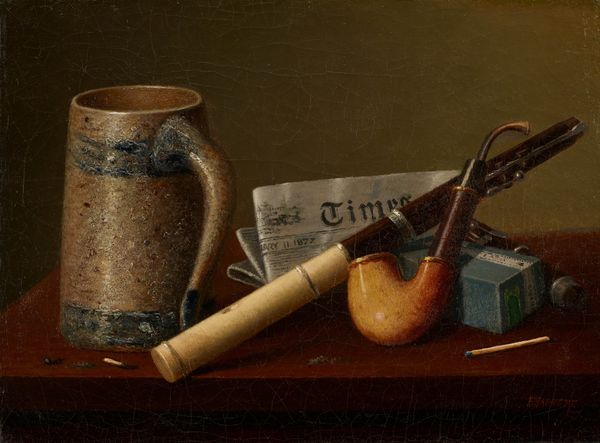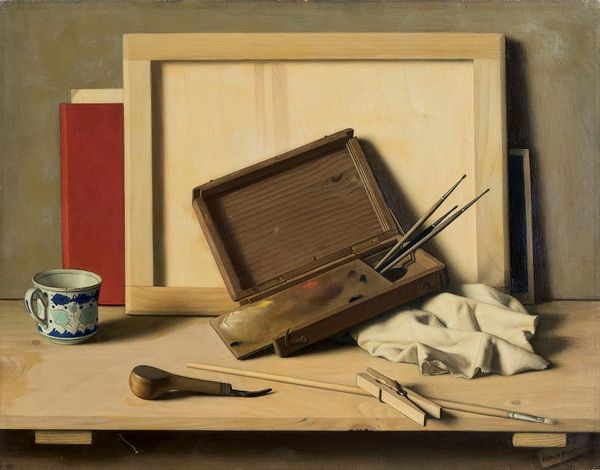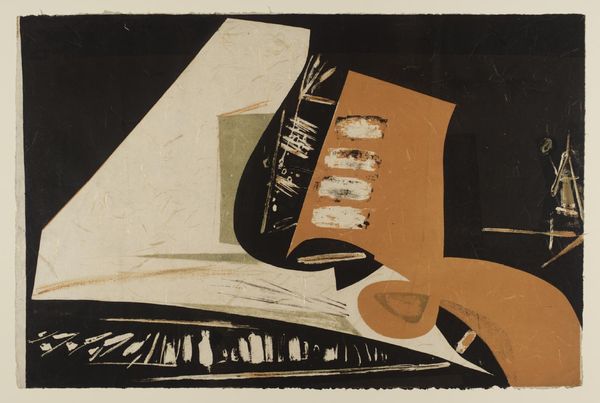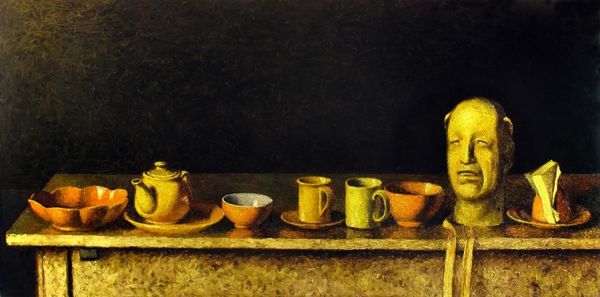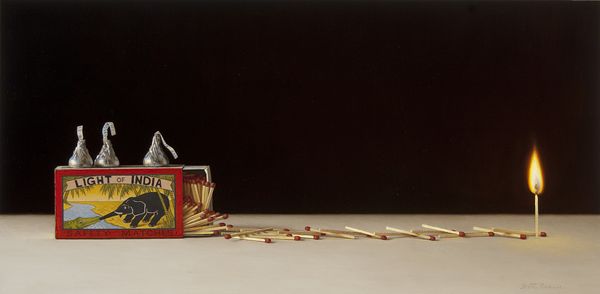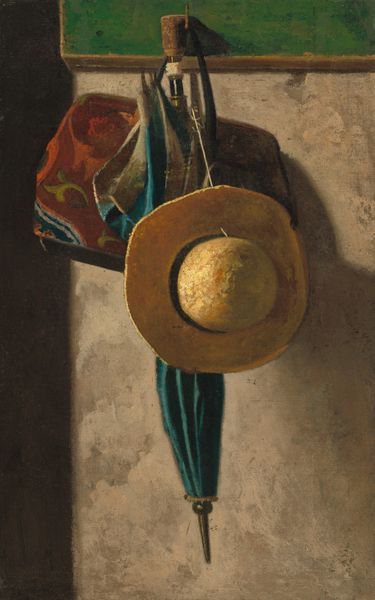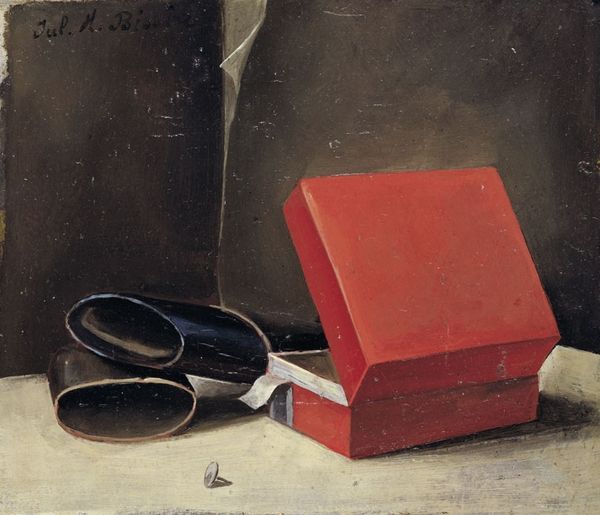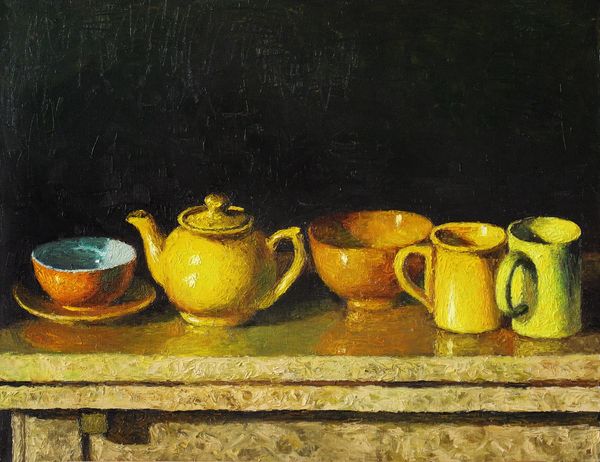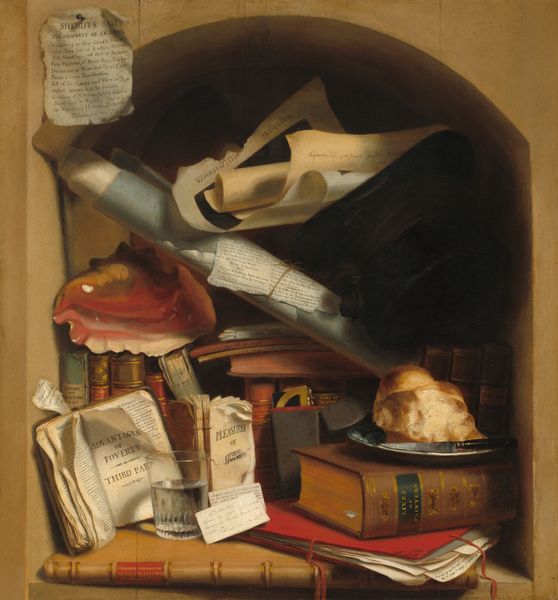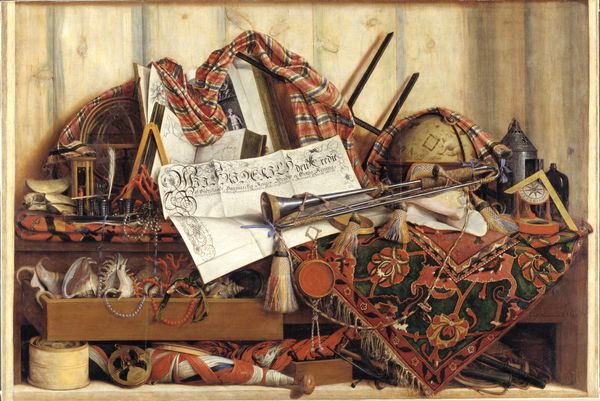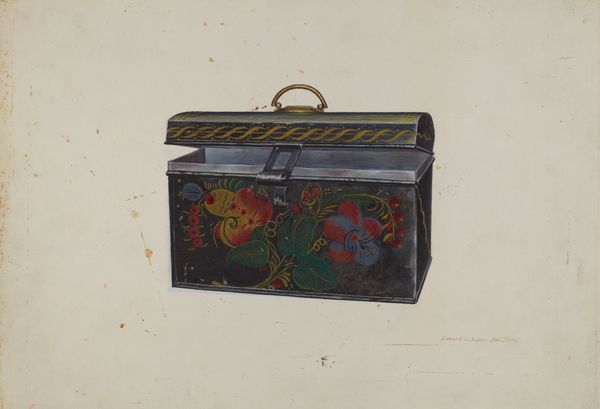
oil-paint
#
gouache
#
oil-paint
#
oil painting
#
genre-painting
#
realism
Dimensions: overall: 10.8 x 16.5 cm (4 1/4 x 6 1/2 in.) framed: 20 x 26 x 1.6 cm (7 7/8 x 10 1/4 x 5/8 in.)
Copyright: National Gallery of Art: CC0 1.0
Editor: We’re looking at John Frederick Peto's "The Blue Envelope," painted around the 1890s with oil paint. It's a still life, pretty small, but something about it feels… weighty. There’s a solidity to the objects, this book and the inkwell, almost like they’re holding secrets. What do you make of it? Curator: Secrets whispered in ink, perhaps? Peto, bless his heart, had this incredible knack for imbuing everyday objects with a quiet narrative. He was a master of trompe-l'oeil, of fooling the eye. Notice how he renders the textures - the worn edges of the envelope, the way light catches the lip of the inkwell. Makes you want to reach out and touch them, doesn’t it? Almost palpable...Do you feel the weight yourself, the heaviness that goes beyond a merely technical impression of real-world volumes? Editor: Absolutely. And the palette is so muted, almost monochrome, save for that splash of blue. Why the focus on these specific objects, a letter, an inkwell... Why is the letter such an important piece to highlight? Curator: Ah, the letter. Correspondence. In Peto’s time, a blue envelope might hold promises, bad news, even a love letter. Its placement right there at the centre of the work acts like a hinge, connecting us to the scene as the viewer or receiver of that said letter. The damaged and torn edges lend it a lived, almost palpable history. He captures a fleeting moment, preserves the essence of everyday communication on canvas and in oil paints... it's beautiful and evocative. Editor: So it's not just about replicating reality, it's about capturing a feeling? Curator: Exactly! It is also worth bearing in mind the context. While realism could sometimes fall out of style, the appeal towards capturing real human life in the arts never really goes away, only grows stronger and branches off. So to summarise what it really brings for the audiences - the art of trompe-l’oeil painting combined with the common daily writing experience - makes the audiences both admire and appreciate its brilliance on a new level. A reflection on what can become a new era of artwork appreciation through realism! Editor: That makes so much sense! I will keep that in mind when considering realism going forward! Curator: I’m sure that I also have learned things myself along the way! I like that it has become the centre of this reflection on painting as much as what we were really looking at as an artwork ourselves.
Comments
No comments
Be the first to comment and join the conversation on the ultimate creative platform.

